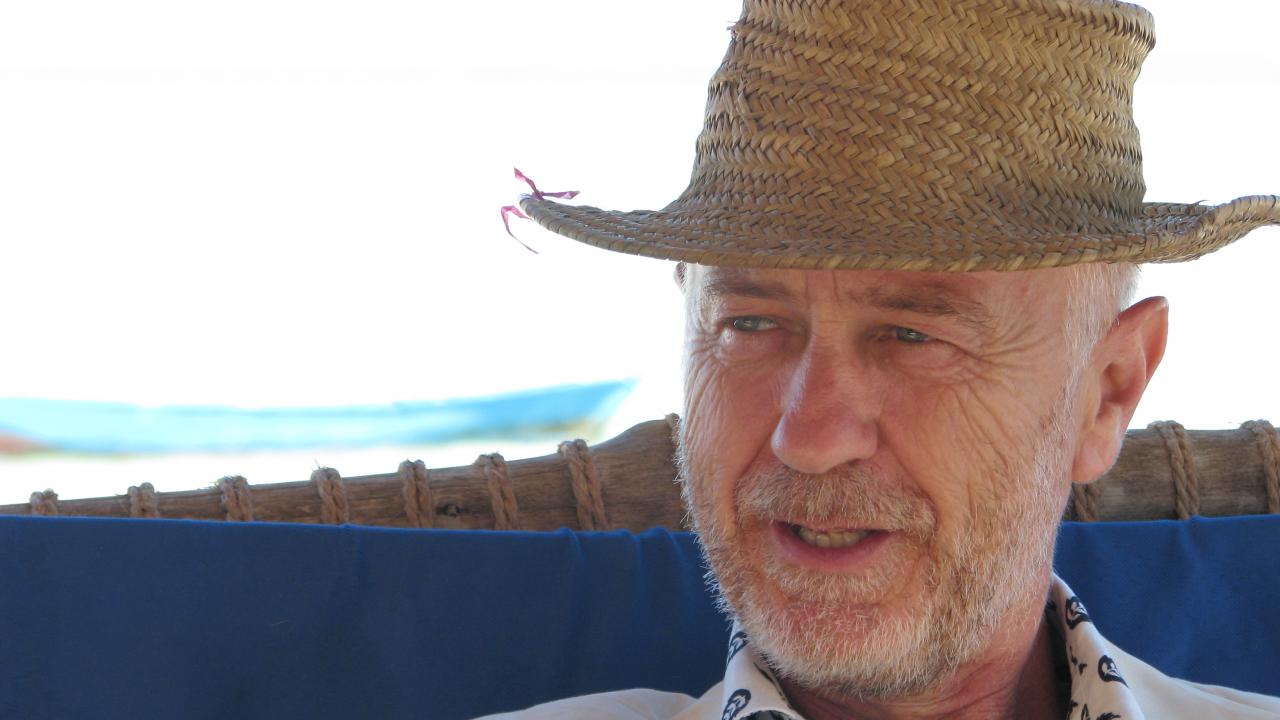
UC Davis Professor Tim Caro has devoted his life to studying African wildlife
Tim Caro knew from a very young age what he wanted to make of his life.
“My mother gave me a copy of The Observer’s Book of Birdsat the age of three, and from that point onward I wanted to be a zoologist,” said the British-born UC Davis wildlife distinguished professor.
While he was an undergraduate at Cambridge University in the early 1970s, he got a job as a research assistant in Serengeti National Park. The experience ignited his passion to study African wildlife, something he has been doing for most of his 50-year career. He has ventured abroad to learn how juvenile cheetahs take down prey, how zebras evolved their stripes, and is now working on a creature called a coconut crab that has largely disappeared from its native range.
Caro joined the faculty of the UC Davis Department of Wildlife, Fish and Conservation Biology in 1990. He split his career since then on conservation issues in Africa and research to understand animal behavior and coloration in mammals. He also teaches a unique class at UC Davis on animal coloration and is working on a book on the subject.
In 2005, Caro was working in Tanzania’s remote Katavi National Park when he decided to take on the ages-old riddle: why do zebras have stripes—a problem that has vexed biologists since the time of Darwin and Wallace.For the next decade, he tested all the hypotheses for the zebras’ strange coloration. Are the stripes a form of camouflage? Are they a form of social “glue”? Do they keep zebras cool? Eventually, he was able to show that their peculiar stripes are a form of protection from horse flies, which can carry deadly diseases. (Read more about the latest on this research.)
When he’s not in Davis, Caro is likely to be found on the Tanzanian island of Pemba, where for the last three years he has been studying coconut crabs. They can weigh up to 9 pounds, have legs that extend out more than three feet tip to tip and have powerful claws that make short work of their food. They also have evolved two distinct color schemes: some are red and some are blue. Caro doesn’t know what causes this duality yet, but he’s determined to find out because this is a species in trouble.

There was a time when coconut crabs could be found throughout their native range in much of the western Pacific, Indian Ocean, Middle East, and along the east African coast. Because they are considered a delicacy among some cultures, coconut crabs have dwindled and are now found primarily on islands in these regions.
“They’re easy to catch,” Caro says. “People go out at night with a flashlight, pick up a crab and then boil it or roast it. Part of the problem is these crabs don’t reproduce until they’re about four or five years old, so the population can’t recover from any sustained take.”
Caro has been working with Vicky Morgan, a Ph.D. student in the UC Davis Population Biology graduate group, to collect genetic information about these fascinating creatures, also known as “robber crabs” for their propensity to steal food when given the opportunity. The scientists have collected a large amount of data from parts of the crab’s range—Pemba, Zanzibar and Christmas Island—and are hoping that they can use this information for conservation efforts.
The International Union for the Conservation of Nature (IUCN) lists coconut crabs as “data deficient,” which means there isn’t enough information about them to add them to the IUCN’s “red list” of threatened species. If the crab is upgraded, member nations in the IUCN would agree to abide by designations that protect this species.
In the meantime, Caro is collaborating with the Zanzibar Department of Forestry and Pemban village members to get the word out about the plight facing coconut crabs. One idea is to promote ecotourism so that people can see these creatures in their native habitat. “Education is not enough,” he said. “You have to have an economic carrot combined with education.”
Caro sees many students who want to make their own mark in the field of conservation biology. “They see the natural world disappearing at an alarming rate and want to do something before it’s too late,” he said.
He urges them to take a look at tropical and subtropical countries where biodiversity is being challenged on so many fronts—from human encroachment to climate change. “That’s where the action is,” Caro said. “If one is interested in having an impact as a biologist, take a look at the amazing species outside the United States and the problems they face.”